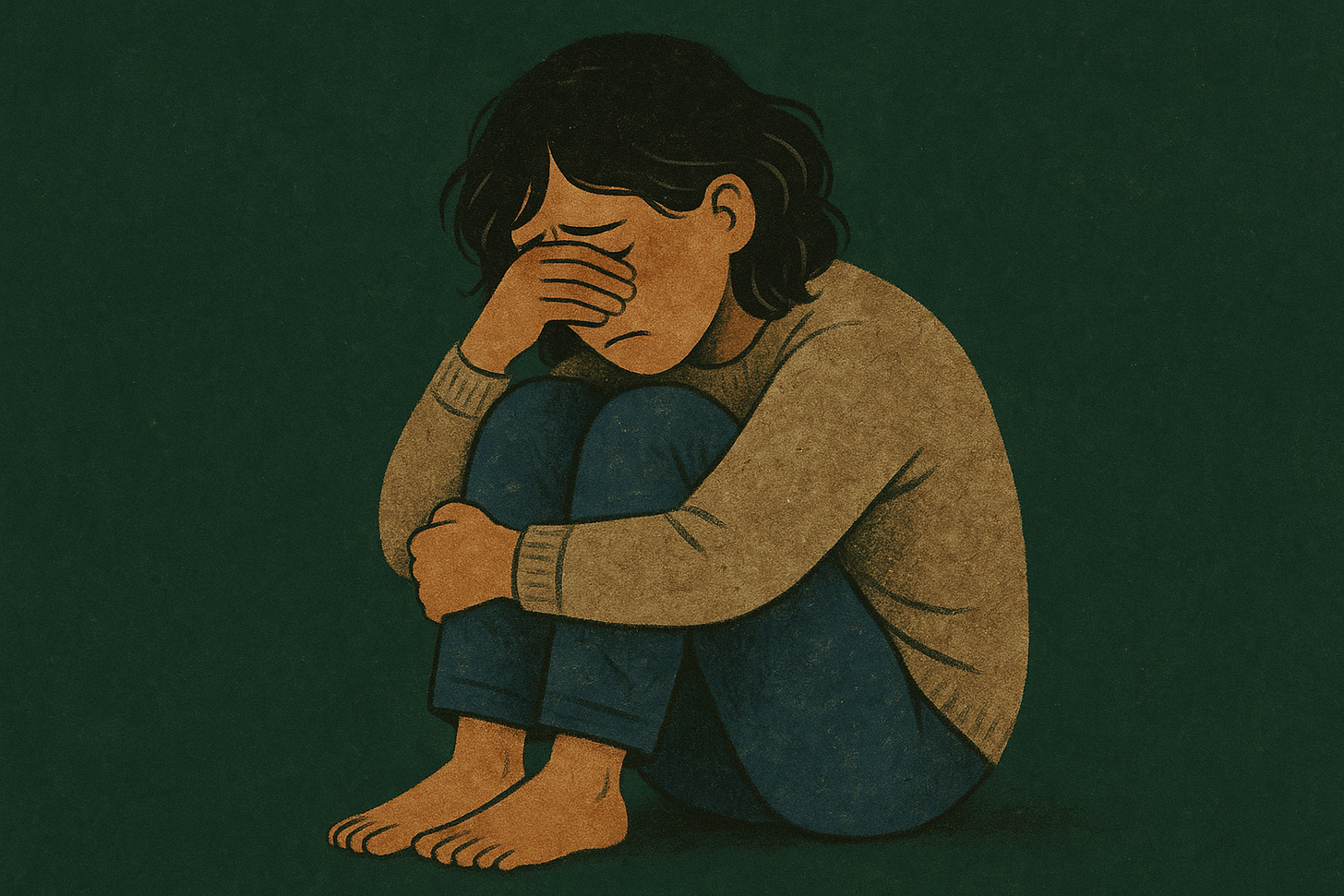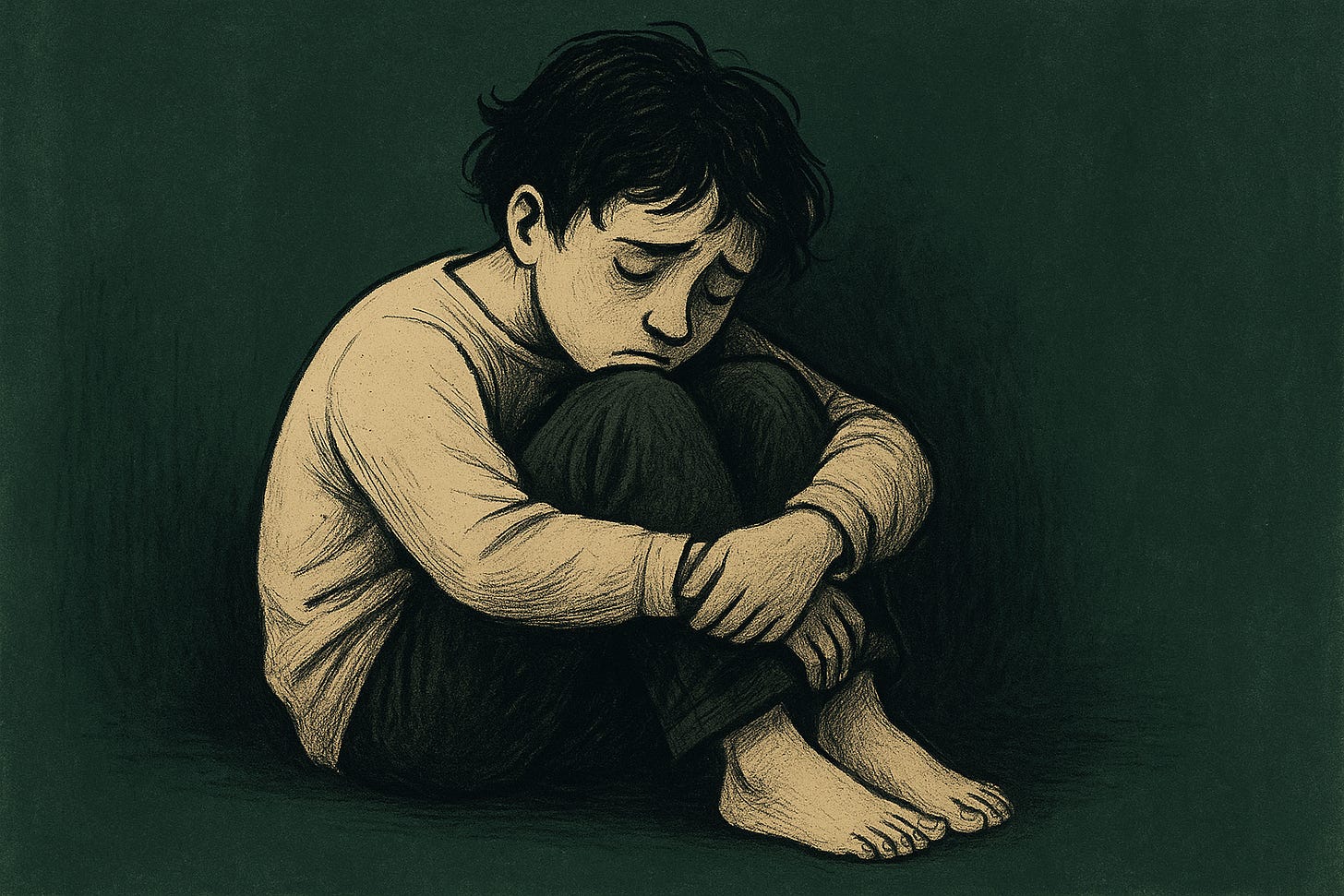The Mental Health Paradox: Why Illnesses Don't Spread but States Do !
Mental health illnesses are not contagious but Mental health states are contagious.
Disclaimer : This essay represents research and writing conducted for educational and informational purposes only. It is not intended as medical advice, diagnosis, or treatment recommendations. Mental health concerns should always be addressed with qualified healthcare professionals. If you are experiencing mental health symptoms or are in crisis, please consult a licensed mental health provider or contact appropriate emergency services.
Mental health illnesses are fundamentally non-contagious biological conditions, yet emotional states spread rapidly between people through well-established neurobiological mechanisms.
This paradox, rooted in the distinction between genetic, clinical conditions and temporary emotional experiences, has profound implications for how we understand, treat, and discuss mental health in society.
Recent neuroscience research reveals sophisticated mechanisms underlying emotional contagion while simultaneously confirming that clinical mental health conditions cannot be transmitted between people due to their complex biological foundations.
The critical distinction lies in understanding that clinical mental health disorders require specific genetic vulnerabilities, neurobiological alterations, and environmental interactions that develop over time within an individual.
In contrast, emotional states utilise our evolved capacity for social connection through mirror neurons, physiological synchronisation, and shared neural networks.
This difference explains why depression cannot be “caught” from someone else, but their temporary sadness or anxiety can influence our own emotional state through normal social-emotional processes.
Mental health disorders are fundamentally non-transmissible due to their complex polygenic architecture and neurobiological foundations. Twin studies demonstrate that primary psychiatric conditions have substantial heritability: bipolar disorder shows 60-90% heritability, major depression 40-50%, and schizophrenia 81-85%.
These genetic vulnerabilities involve thousands of common genetic variants, each contributing minor effects that collectively influence disorder risk through unique individual combinations that cannot be replicated or transmitted.
Brain imaging studies reveal distinct neurobiological signatures that distinguish clinical conditions from normal emotional responses. Depression involves reduced prefrontal cortex activity and altered amygdala responses, Nature, while anxiety disorders show overactivity in fear processing circuits.
Schizophrenia presents with reduced grey matter volume and disrupted dopamine systems.
These structural and functional brain differences develop through genetic influences and gene-environment interactions during critical developmental periods, creating disorder-specific neural signatures that cannot be transmitted from one individual to another.
The 2020-2025 research has identified specific biological mechanisms that make transmission impossible.
Genome-wide association studies (GWAS) have discovered hundreds of genetic variants associated with psychiatric disorders, with a 2024 PTSD study identifying 95 genetic loci and 43 causative genes.
These genetic foundations operate through complex neurodevelopmental processes that affect synaptic function, neurotransmitter systems, and neural connectivity patterns, which are fundamentally distinct from those of infectious diseases.
Environmental factors trigger rather than transmit mental health conditions by interacting with existing genetic vulnerabilities.
WHO Stress, trauma, or substance use can activate latent predispositions in genetically susceptible individuals, but cannot create mental illness in those without underlying biological vulnerability.
This gene-environment interaction model explains why shared environmental stressors don’t cause identical mental health outcomes across different people—genetic differences determine individual responses to environmental triggers.
Automatic mimicry creates physiological synchronisation between interacting individuals.
Frontiers Studies using electrocardiograms demonstrate heart rate alignment between partners during shared emotional experiences, with stronger synchrony observed between friends versus strangers during favourable emotion conditions.
Social network research demonstrates emotional transmission patterns that follow epidemiological models.
The landmark Facebook study, involving 689,003 users, provided experimental evidence that emotional states can transfer through social networks without direct interaction, with reduced positive content leading to fewer positive posts and more negative posts by users.
Diagnostic criteria clearly distinguish between temporary emotional responses and clinical conditions that require professional treatment. Major depressive disorder requires five or more symptoms persisting most of the day, nearly every day, for at least two weeks, with clinically significant functional impairment. This contrasts sharply with normal sadness, which typically has identifiable triggers, is time-limited, allows enjoyment of some activities, and doesn’t prevent basic daily functioning.
Duration, severity, and functional impairment serve as key diagnostic thresholds. Generalised anxiety disorder requires excessive anxiety occurring more days than not for at least six months with uncontrollable worry and significant physical symptoms. Normal worry remains proportionate to circumstances, can be managed and set aside, and motivates problem-solving rather than interfering with daily functioning.
Treatment approaches reflect fundamental differences between clinical conditions and emotional states.
Clinical conditions require evidence-based interventions, including cognitive behavioural therapy, pharmacological treatments, and structured protocols with professional oversight aimed at symptom reduction, functional restoration, and relapse prevention.
Temporary emotional states benefit from supportive counselling, psychoeducation, coping skill enhancement, and social support mobilisation with time-limited interventions focused on validation and natural recovery processes.
Revolutionary neuroplasticity research from 2025 reveals that social brain networks exhibit remarkable adaptability through mental training, with compassion training engaging distinct neural circuits compared to empathy training and transforming negative feelings into positive states.
These findings reveal that healthy brains maintain flexibility in social-emotional processing, contrasting with the persistent alterations in connectivity and reduced neuroplasticity characteristic of clinical conditions.
Social media fundamentally alters emotional contagion patterns through algorithmic amplification and massive-scale exposure.
The 2024 Facebook study demonstrated that reducing harmful content by 50% in news feeds decreased negative comments by 14.97%, while platform algorithms determine emotional exposure at unprecedented population scales, creating new challenges for mental health management.
Digital emotional transmission operates through text-based contagion alone, contradicting traditional psychology’s emphasis on nonverbal cues.
Stigma spreads through emotional contagion mechanisms on digital platforms, with a comprehensive Twitter analysis of over one million tweets revealing that mental health conditions experience 12.9% stigmatisation versus 8.1% for physical health conditions.
Schizophrenia faces the highest stigmatisation at 41%, while opinion-based mental health discourse proves more likely to be stigmatising than factual information sharing.
Public health interventions must strike a balance between the benefits of emotional contagion and the clinical treatment needs.
The U.S. Surgeon General’s 2023 Advisory emphasises individualised approaches recognising both benefits (peer support, reduced isolation) and risks (comparison, cyberbullying), with evidence-based digital mental health interventions showing effectiveness through synchronous communication, web-based therapy, and brief single-session interventions.
Understanding the contagion paradox reduces stigma by clearly distinguishing between normal social-emotional processes and clinical medical conditions.
This knowledge combats harmful misconceptions that mental illness can be “caught” from others, while validating the reality of emotional influence and social support networks in mental health recovery.
Therapeutic relationships require different boundaries, depending on whether they involve addressing clinical conditions or providing emotional support.
Clinical treatment involves strict professional boundaries, comprehensive confidentiality protection, and structured interventions designed to promote biological and psychological change.
Supportive care allows for more flexible boundaries in addressing situational adjustment issues while maintaining readiness for clinical referral if symptoms progress.
Professional training must incorporate both the biological understanding of mental illness and the social neuroscience of emotional contagion.
Mental health professionals need to be competent in distinguishing between clinical conditions that require specialised treatment and normal emotional responses that benefit from support and validation, with regular assessment and diagnostic revision as conditions evolve.
Workplace and community applications benefit from recognising that negative emotional contagion increases cognitive errors and accidents, while positive contagion reduces both.
Positive Psychology Research shows emotional states influence up to five people in close contact, creating substantial multiplier effects for targeted interventions focusing on emotional leadership and positive communication.
The research reveals a sophisticated biological and social reality: mental health illnesses remain fundamentally non-contagious medical conditions with genetic and neurobiological foundations, while emotional states naturally spread through evolved social-brain mechanisms that facilitate human connection and empathy.
Understanding this paradox enables more effective mental health approaches that harness positive emotional contagion for support and healing while ensuring appropriate clinical treatment for those with psychiatric conditions.
This knowledge transforms how we approach mental health stigma, therapeutic relationships, and public health interventions in the digital age.
Rather than fearing emotional influence or avoiding those with mental illness, we can embrace our capacity for emotional connection while maintaining clear boundaries between adaptive social processes and clinical pathology requiring professional treatment.
The future of mental health lies in integrating this neurobiological understanding with compassionate, evidence-based approaches that honour both individual medical needs and our fundamental human capacity for emotional connection and mutual support.
Thank you for reading. Your time and attention mean everything. This essay is free, but you can always buy me coffee or visit my shop to support my work. For more thoughts and short notes, please find me on Instagram.




